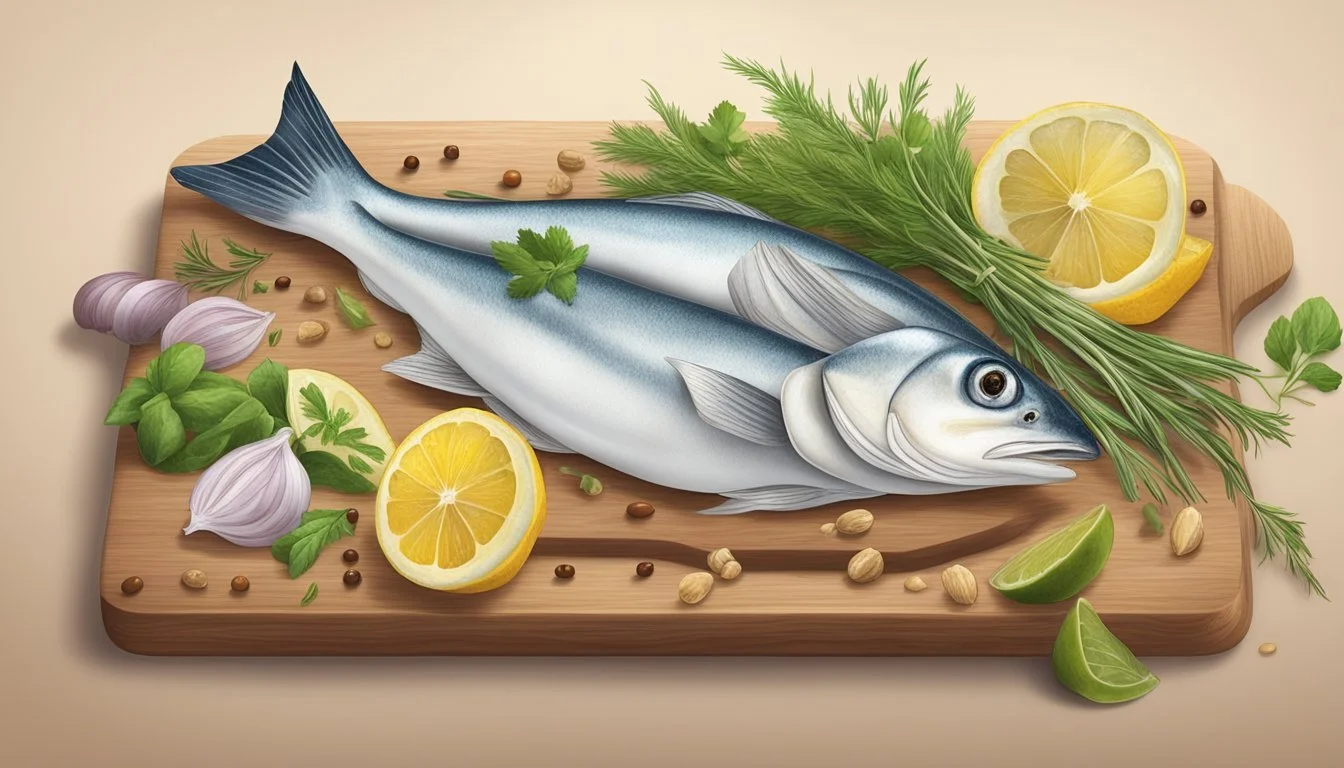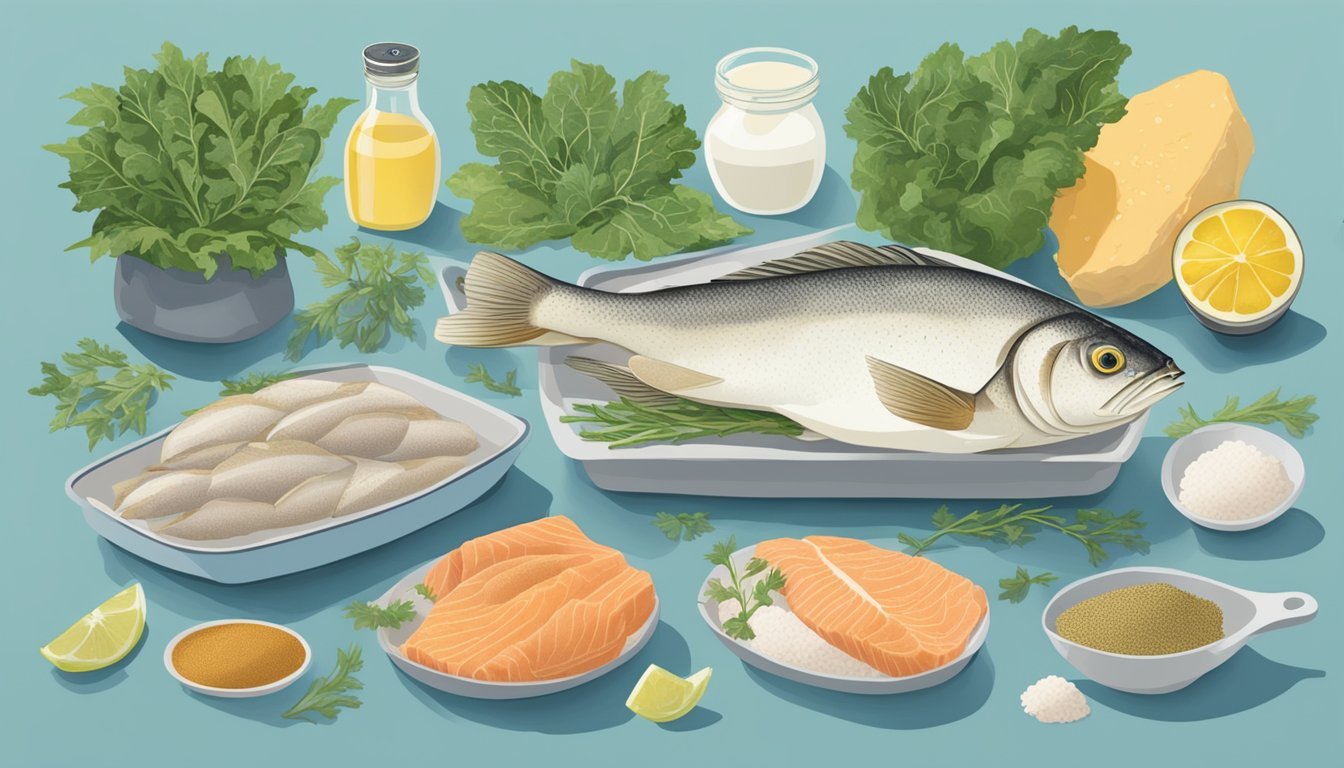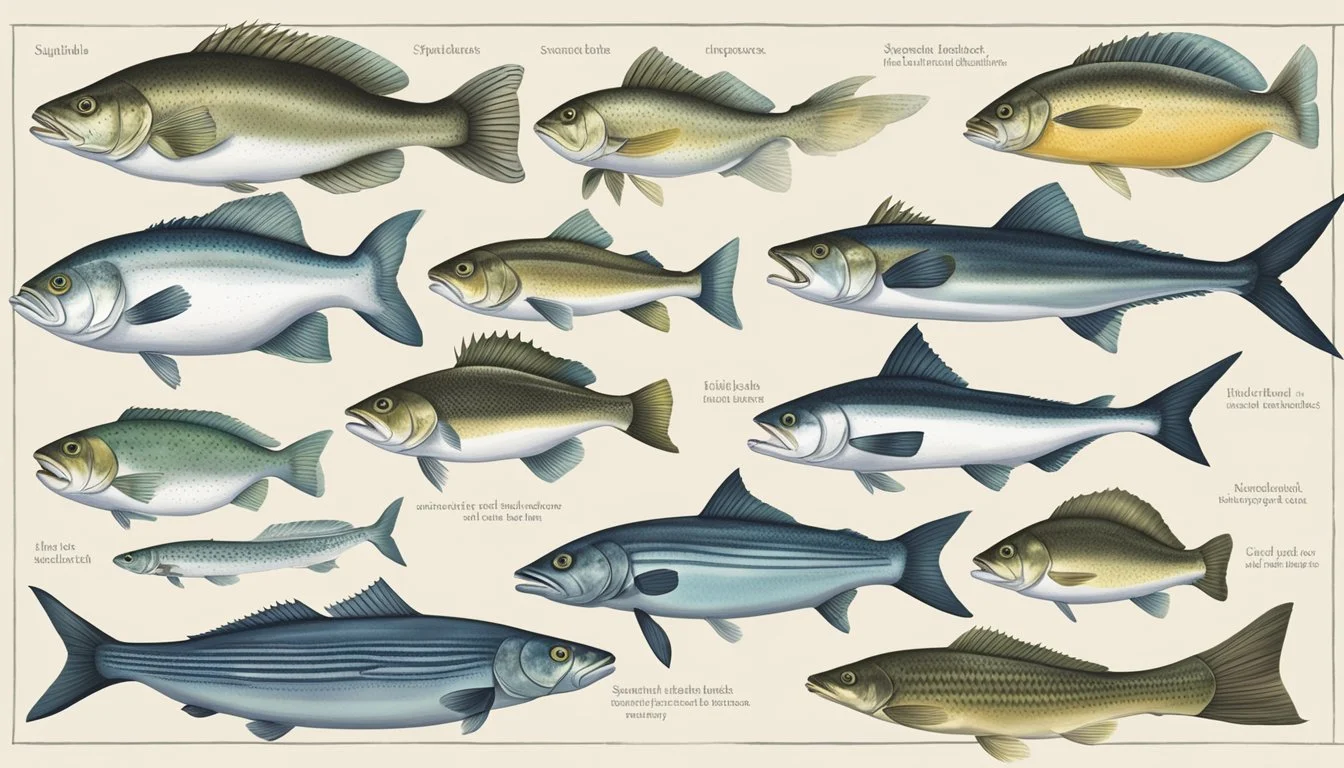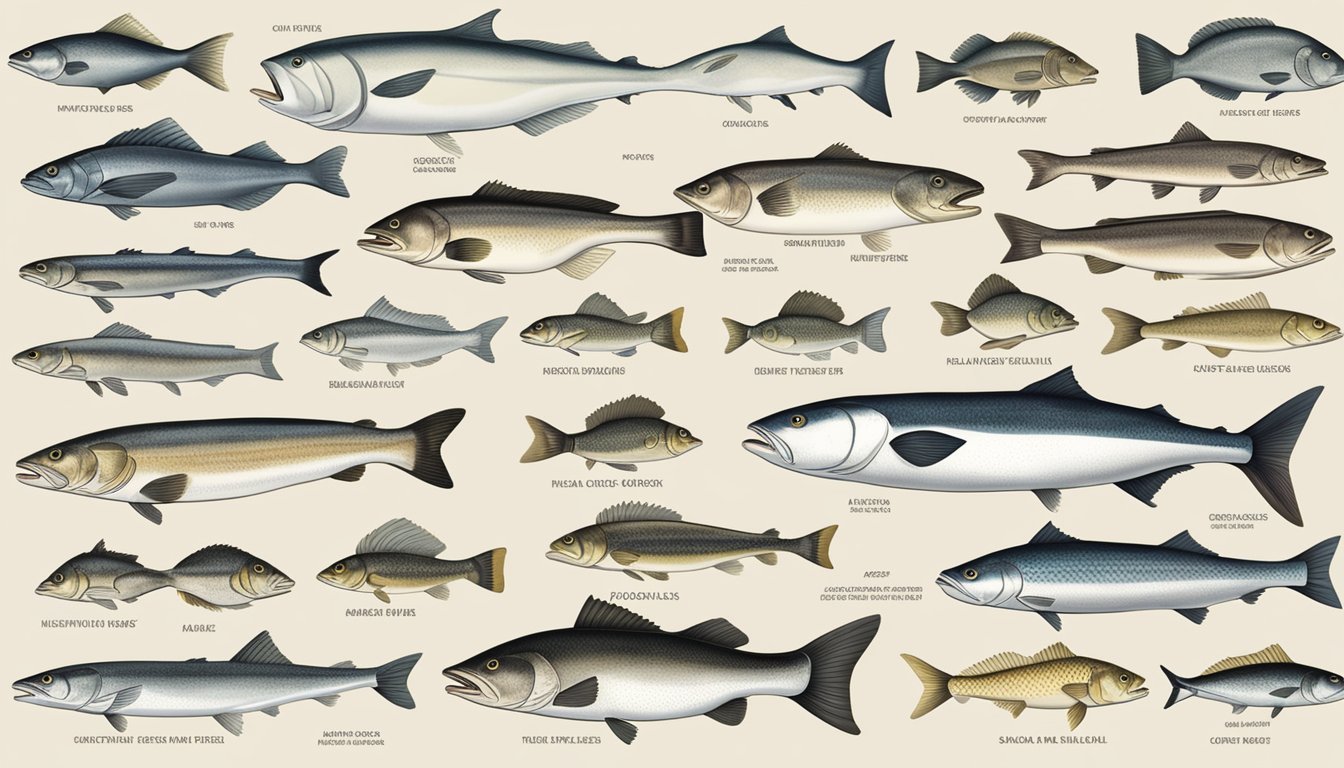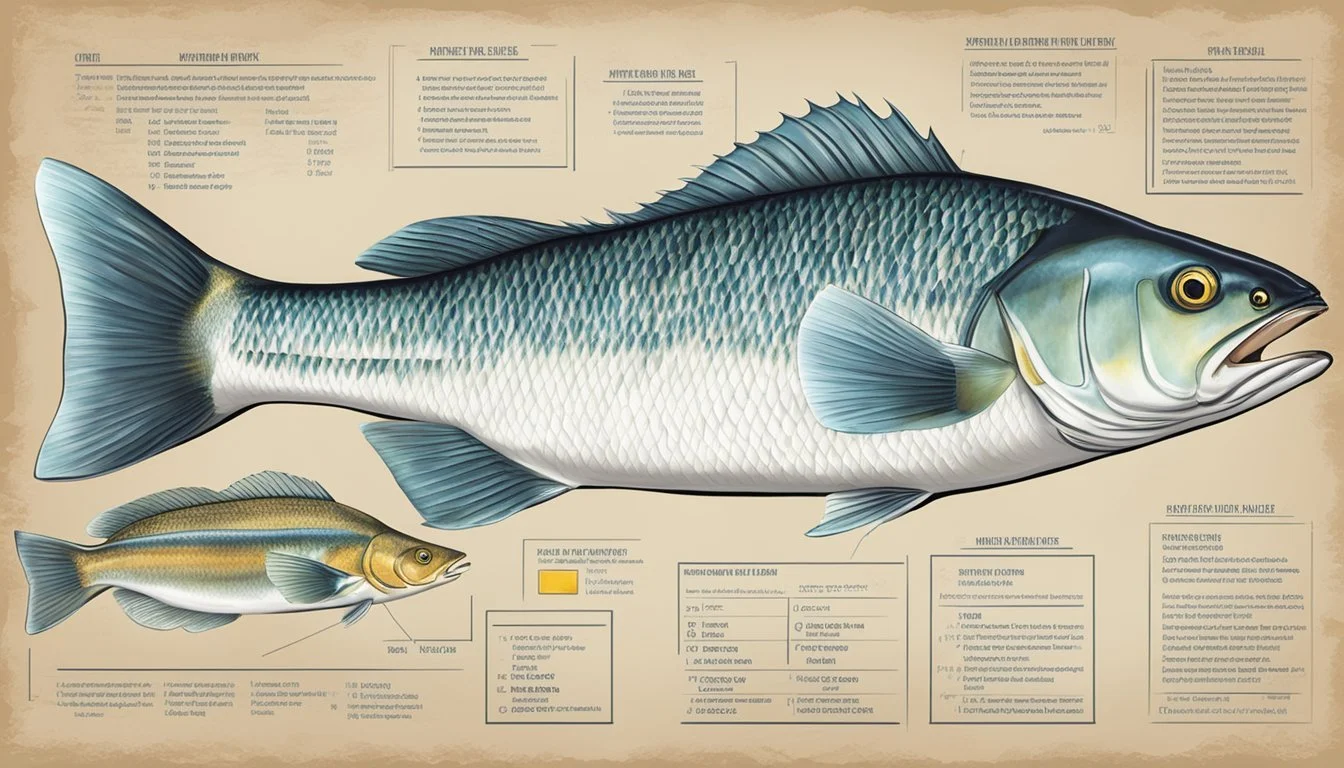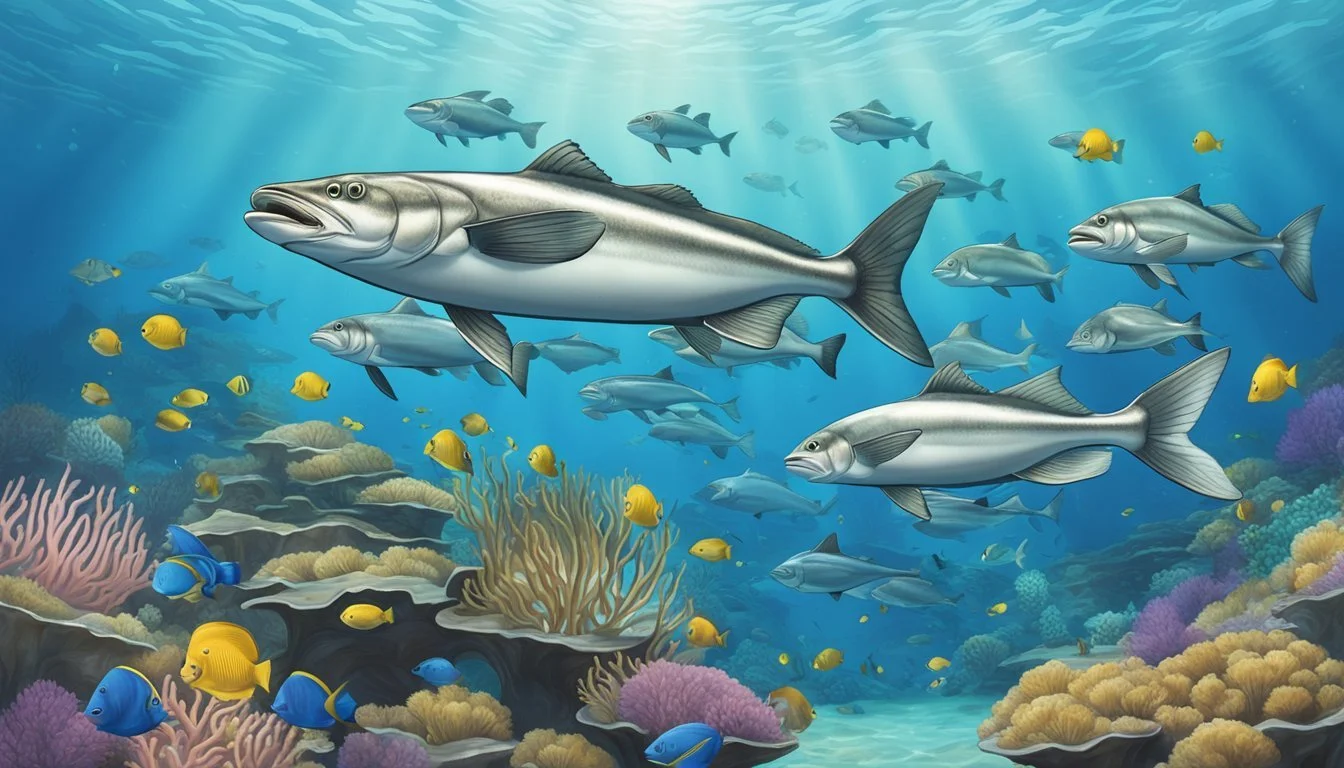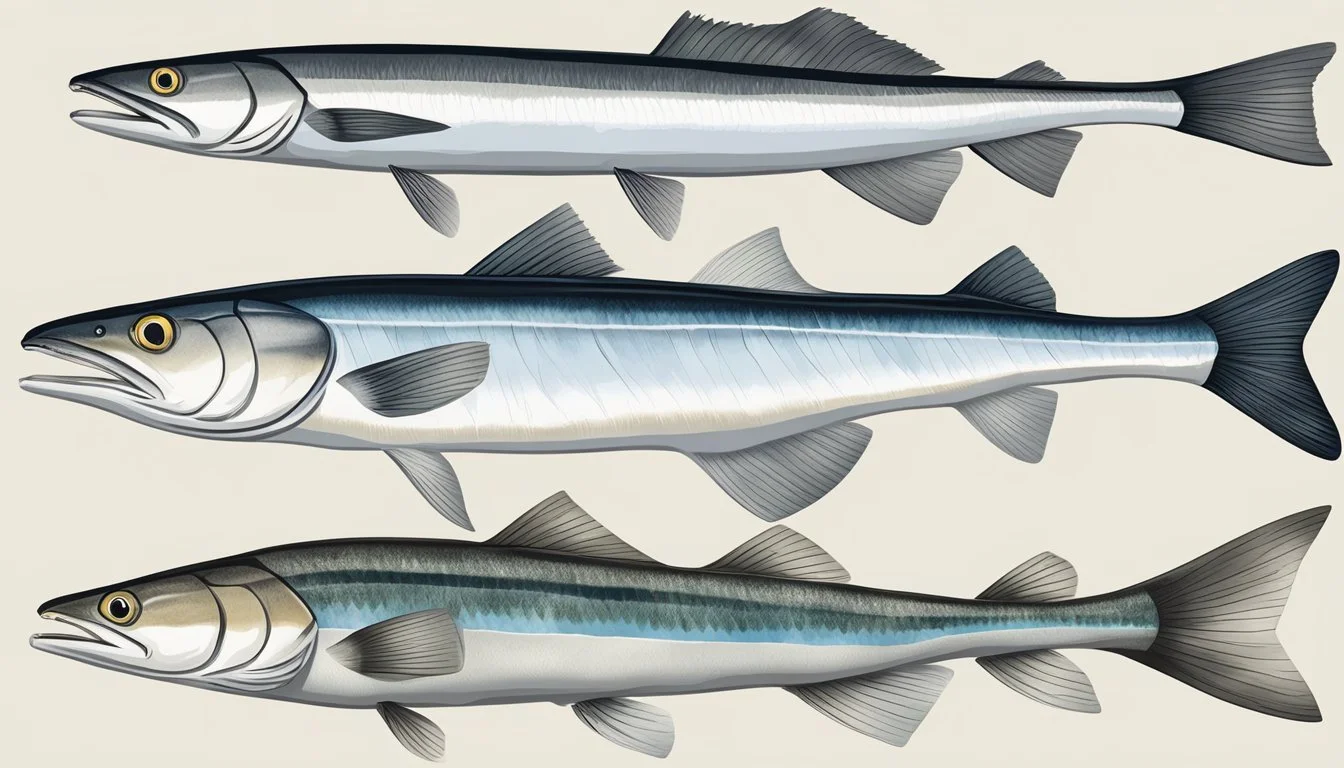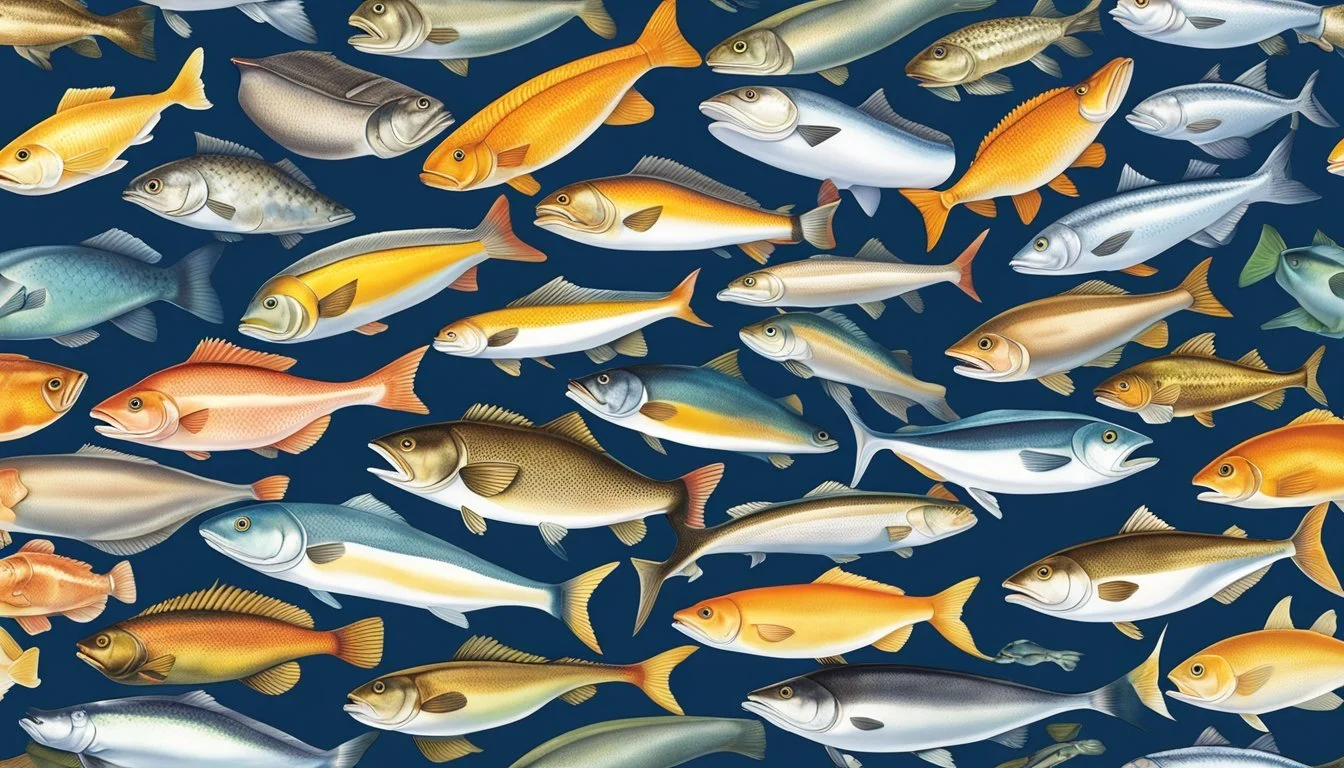Haddock Substitutes
Top Alternatives for Your Recipes
Choosing the right substitute for haddock can elevate your culinary experience without compromising on flavor or texture. While haddock is a favorite for its mild, slightly sweet taste and firm, flaky texture, Pacific rockfish and pollock serve as excellent alternatives. These substitutes mirror haddock's characteristics, allowing seamless integration into any recipe that traditionally calls for haddock.
Pollock, for example, offers a mild flavor and a firm, flaky texture similar to haddock, making it a sustainable and economical choice. For those leaning towards an option found abundantly in the North Pacific, Pacific rockfish, also known as Pacific Ocean Perch, provides a close match in taste and texture.
Cod, another popular alternative, retains the mild flavor and firm texture of haddock, ensuring versatility in various dishes. Whether the priority is sustainability, flavor, or accessibility, these substitutes ensure that your recipes remain delicious and satisfying.
Understanding Haddock
Haddock is a type of white fish known for its lean white flesh and mild, slightly sweet flavor. It is a popular choice in various culinary applications, especially in the well-loved dish of fish and chips.
Haddock features a firm, flaky texture which makes it suitable for various cooking methods, such as baking, frying, and grilling. This versatility contributes to its frequent use in both home cooking and restaurant dishes.
Nutritionally, haddock is a powerhouse. It is an excellent source of protein, which is essential for muscle repair and growth. Additionally, haddock provides omega-3 fatty acids, important for heart health.
This fish is also rich in vitamins and minerals. Haddock contains significant amounts of Vitamin B12, niacin, and selenium, which supports immune function and thyroid health.
Here is a brief breakdown of the nutritional benefits of haddock:
Nutrient Benefit Protein Muscle repair and growth Omega-3 Heart health Vitamin B12 Nervous system support Niacin Helps convert food into energy Selenium Immune support and thyroid function
Thus, haddock not only enhances the flavor profile of dishes but also contributes significantly to a balanced diet.
Characteristics of Suitable Substitutes
Substitutes for haddock should have similar flavor profiles and textures. Pollock is a popular choice with its mild, slightly sweet taste and firm, flaky texture.
Smoked cod offers a comparable smoky flavor and delicate texture, making it another effective substitute for smoked haddock. It's often used in equal amounts due to its similar properties.
Pacific rockfish provides versatility in cooking, and its texture matches haddock's firmness. It's widely available and works well in various recipes.
Halibut is another suitable alternative. Known for its mild flavor and firm, flaky texture, it holds up well in both baking and grilling.
When considering substitutes, nutritional benefits are important. These fish generally offer similar health benefits, rich in protein and omega-3 fatty acids.
Here’s a quick overview:
Fish Flavor Profile Texture Notable Characteristics Pollock Mild, slightly sweet Firm, flaky Economical and sustainable when sourced from eco-friendly fisheries Smoked Cod Smoky Delicate Imparts a smoky flavor; suitable for 1:1 substitution with smoked haddock Pacific Rockfish Versatile, mild Firm, flaky Widely accessible; suitable for various cooking methods Halibut Mild Firm, flaky Excellent for baking and grilling
When selecting a haddock substitute, these options ensure that the flavor and texture remain consistent with the original dish. Experimenting with these fish can provide both culinary variety and nutritional balance.
Popular Haddock Alternatives
Choosing the right substitute for haddock depends on the desired flavor and texture for your dish. Here are some popular options, each with unique qualities, that can stand in for haddock in various recipes.
Pollock and Cod
Pollock and cod are excellent haddock substitutes due to their mild flavor and flaky texture. Pollock has a slightly sweeter taste and is often found in fish sticks and sandwiches. It is also a sustainable option when sourced from eco-friendly fisheries. Cod shares a similar mildness and flakiness, making it suitable for a wide range of dishes such as fish and chips and chowders. Both fish are widely available and can be cooked in similar ways to haddock.
Tilapia and Catfish
Tilapia and catfish are popular choices when seeking accessible and budget-friendly Haddock alternatives. Tilapia offers a mild flavor and flaky texture, though it is slightly leaner than haddock. It adapts well to various cooking methods, including baking, grilling, and frying. Catfish has a distinct flavor that's heartier than haddock, making it a good option for recipes needing a stronger taste profile. Its texture is firm and works well in fried or grilled preparations.
Halibut and Flounder
Halibut and flounder are prized for their firm textures and mild flavors. Halibut is thicker and more substantial, making it a good fit for robust recipes that require a solid fish fillet. It's versatile and retains its texture well whether baked, grilled, or pan-seared. Flounder, on the other hand, is thinner and delicate, with a slightly sweet and softer texture. It works well in lighter dishes such as gentle sautés or baking with mild seasoning.
Tropical Fish Varieties
Tropical fish like mahimahi and grouper offer distinctive flavors that can serve as interesting alternatives to haddock. Mahimahi has a firmer texture and slightly sweet taste that suits grilling and broiling. Grouper is known for its moist, large flake texture and mild flavor, making it versatile in various preparations, from baking to frying. Their unique taste can add a new dimension to traditional haddock recipes while still maintaining a similar level of culinary appeal.
Nutritional Comparison
When considering substitutes for haddock, it's important to look at the nutritional value each alternative provides.
Haddock is known for being a good source of lean protein, offering around 19 grams per 100 grams. It’s also rich in omega-3 fatty acids, which are beneficial for heart health.
Cod, a common substitute, offers similar benefits. It provides about 18 grams of protein per 100 grams and is low in saturated fats. Cod also includes essential vitamins and minerals like Vitamin D and Vitamin B12.
Halibut is another alternative, with around 20 grams of protein per 100 grams. It’s packed with essential nutrients such as Vitamin B6, Vitamin B12, and Phosphorus. This makes it a nutrient-dense option that supports various bodily functions.
Pacific Rockfish, offers around 17 grams of protein per 100 grams. It's versatile and contains a good balance of essential vitamins and minerals, including Potassium and Vitamin D.
A brief comparison of nutritional content per 100 grams:
Nutrient Haddock Cod Halibut Pacific Rockfish Protein (grams) 19 18 20 17 Omega-3 Fatty Acids (grams) 0.2 0.2 0.24 0.2 Vitamin B12 (mcg) 1.2 2.38 1.2 1.2 Vitamin D (IU) 150 40 450 250 Saturated Fats (grams) 0.22 0.1 0.7 0.1
Choosing the right fish substitute for haddock can depend on individual nutritional needs and preferences. Each alternative offers a mix of lean protein, omega-3 fatty acids, and essential vitamins and minerals while staying low in saturated fats.
Culinary Applications
Haddock substitutes can fill various culinary roles, from simple baking to sophisticated smoking techniques. This section explores two primary methods of cooking these alternatives.
Baking and Poaching
When baking substitutes like Pacific rockfish or cod, maintain a temperature range of 350-375°F. These fish are firm enough to hold their shape and offer a mild flavor that pairs well with numerous seasonings. Baked fish can be used in dishes such as fish pies, chowders, or fish cakes.
Poaching is another gentle cooking method, ideal for preserving the delicate texture of substitutes such as pollock. Poach fish in a seasoned broth or milk typically at a simmering point. Results are tender and moist, perfect for recipes like kedgeree or simple poached fish served with fresh herbs and lemon.
Pan-Frying and Smoking
Pan-frying is suitable for haddock alternatives like halibut. These fish have a firm texture that becomes beautifully crisp on the outside. Lightly coat the fillets in flour or breadcrumbs and fry in a mixture of oil and butter for a golden finish. Pan-fried fish can be used in fishcakes or served with various sides.
Smoking brings a unique depth of flavor to alternatives like smoked cod. The smoking process involves curing the fish with salt, then cold smoking to infuse a smoky aroma. Smoked fish pairs well with potatoes, in salads, or within traditional dishes like kedgeree and fish chowders. Proper smoking requires controlled temperatures and wood chips like hickory or oak for a balanced smokiness.
Sustainable and Environmental Aspects
Choosing haddock substitutes can have significant benefits for sustainability and environmental impact. Selecting fish from environmentally friendly sources ensures that marine ecosystems remain healthy and productive.
Tilapia farming, for instance, is viewed as a more sustainable option due to its lower environmental impact compared to traditional haddock fishing. Tilapia are often raised in freshwater ponds or tanks, and their diet mainly consists of algae and vegetation.
Pollock is another sustainable choice. It offers a similar taste and texture to haddock and is abundant. Pollock from certified fisheries, such as those approved by the Marine Stewardship Council (MSC), can be a responsible option.
Pacific Rockfish also serves as a sustainable alternative. Sourced primarily from the North Pacific, this fish is known for its versatility and can be sustainably caught from well-managed fisheries.
Halibut is widely accessible and offers a similar texture to haddock. When sourced from fisheries certified by the Aquaculture Stewardship Council (ASC), it provides an environmentally sound choice.
Comparative Environmental Impact Table
Fish Type Sustainable Source Environmental Impact Tilapia Freshwater ponds, tanks, algae-based diet Lower impact, sustainable farms Pollock Certified fisheries (MSC) Moderate impact, abundant stock Pacific Rockfish North Pacific fisheries, versatile catch Well-managed, low impact Halibut ASC-certified fisheries Responsible fishing practices
Understanding the sourcing and environmental impact of these substitutes helps consumers make informed and sustainable seafood choices. Sustainable practices contribute to the health of marine ecosystems and support responsible fishing methods.
Seasoning and Flavor Enhancement
Enhancing haddock substitutes involves using a variety of seasonings and cooking techniques to bring out the best flavors. Key elements include the right mix of herbs and spices, and the proper usage of butter and oils.
Herbs and Spices
Using herbs and spices can significantly elevate the flavor profile of fish like pollock, mackerel, or tilapia. Cumin adds an earthy depth, while oregano imparts a slightly bitter yet aromatic quality.
Dill and parsley bring fresh, bright notes, while paprika offers a sweet smokiness. Garlic powder and pepper are essentials for a balanced seasoning mix. Combining these spices ensures a complex and satisfying flavor without overpowering the fish's natural taste.
Butter and Oils
Choosing the right butter and oils is crucial for cooking fish substitutes. Butter, especially when mixed with garlic, creates a rich and savory base. Using olive oil or avocado oil not only adds healthy fats but also enhances the fish's texture and flavor.
Clarified butter or ghee is excellent for higher-heat cooking, providing a nutty taste without burning. Lemon-infused oils or herb-infused butters can add layers of flavor that complement rather than mask the fish’s essence. These fats are ideal for both cooking and finishing dishes.
Considerations When Choosing Substitutes
Texture and Flavor
Selecting a haddock substitute requires careful consideration of texture and flavor. Haddock has a flaky texture and mild flavor, so it's crucial to choose fish like cod or pollock, which also offer similar characteristics.
Source and Sustainability
Opt for fish from sustainable sources. This includes species like Pacific rockfish, which is widely recognized for its sustainable fishing practices. Ethical sourcing ensures long-term availability and environmental responsibility.
Availability and Cost
Accessibility and affordability are practical factors. Cod and tilapia are often available in most markets and are generally affordable, making them convenient choices for many households.
Thickness and Cooking Methods
The thickness of the fish can affect cooking times and methods. Thicker fillets like those of halibut or swordfish handle grilling well, whereas thinner fillets like those of tilapia are better for frying or baking.
Nutritional Content
Haddock is high in protein and omega-3 fatty acids. When substituting, consider fish like mackerel or trout that provide similar nutritional benefits to ensure a healthy, balanced meal.
Substitution Tips
For Similar Texture and Flavor: Cod, Pollock
For Nutritional Value: Mackerel, Trout
For Grilling: Halibut, Swordfish
For Frying/Baking: Tilapia, Pacific Rockfish
These considerations will help in making an informed decision when substituting haddock in recipes.
Profiles of Specific Haddock Substitutes
When looking to replace haddock in recipes, several fish varieties and other seafood offer similar texture and flavor profiles. Each option provides distinct characteristics, making them suitable depending on the preparation method.
Whitefish Varieties
Cod: Both Atlantic cod and Pacific cod serve as excellent haddock substitutes. They are versatile, mild in flavor, and possess a firm texture. Cod is widely accessible and can be prepared through baking, grilling, or frying. It's rich in high-quality protein and essential nutrients.
Hake: Known as whiting, hake offers a soft and flaky texture, similar to haddock. This ray-finned fish is beneficial in various dishes, especially those requiring a delicate flavor. Commercially fished hake is a sustainable choice.
Sole: With a delicate and mild taste, sole can effectively replace haddock in recipes. It is best suited for light preparations like poaching or pan-frying. Although slightly thinner, its texture adapts well to various cooking methods.
Other Seafood Options
Pollock: Alaskan pollock and Atlantic pollock are practical substitutes, offering a mild and slightly sweet flavor. They provide lean protein and are abundantly sourced from sustainable fisheries. Pollock works particularly well in fried or baked dishes.
Pacific Rockfish: Often found in North Pacific waters, rockfish offers a versatile and thick fillet similar to haddock. It has a slightly nutty flavor and maintains its integrity in many cooking styles, including grilling and baking.
Smoked Options: Smoked cod and smoked mackerel present a different but appealing option. The smoky flavor adds depth to dishes, making them suitable for chowders and casseroles. Smoked haddock itself can also be considered if available.
Freshwater Alternatives
Trout: As a nutritious and mild-flavored fish, trout serves well in various recipes where haddock is used. Its high-quality protein and omega-3 fatty acids make it a healthy option for grilling or pan-searing.
Char: Arctic char offers a rich flavor and firm texture. Similar to trout, it is robust and works well in diverse dishes. Char is praised for its lean protein content and essential nutrients, making it a healthy substitute.
Bass: Freshwater bass, like largemouth or smallmouth, can replace haddock in certain recipes. Its texture and mild taste make it ideal for grilling or baking. Bass is also a good source of high-quality protein and essential nutrients.
Global Influence and Varieties
Fish consumption and substitutes vary globally. Haddock, common in the North Atlantic, finds diverse replacements worldwide.
Europe’s Preference
In Europe, Pollock and Pacific Hake (Whiting) often replace Haddock. These fish provide similar textures and flavors, making them suitable for a variety of dishes. Ling is another alternative, especially its cheeks, becoming trendy in restaurants.
North America
North American kitchens frequently use Smoked Cod and Pacific Rockfish. Both deliver comparable thickness and taste profiles to Haddock, making them ideal for recipes like chowder and baked fish dishes.
Africa’s Choices
In Africa, Tilapia often substitutes due to its local availability. It's a versatile fish that pairs well with traditional vegetables and spices, maintaining a similar culinary role as Haddock.
Industrial Influence
Industrial fisheries globally have adapted, ensuring sustainable and eco-friendly options are available. Certified fisheries ensure substitutes like Pollock and Hake are both economical and sustainable.
Practical Table:
Fish Region Notes Pollock North America, Europe Mild flavor, firm texture, sustainable option Pacific Hake North Pacific Ocean Important for commercial fisheries, versatile species Smoked Cod Global Smoky flavor, used in baking and grilling Tilapia Africa Local availability, versatile with vegetables Pacific Rockfish North America Similar thickness, suitable for various cooking methods
Using these substitutes ensures that culinary traditions continue while adapting to local availability and sustainability needs.

